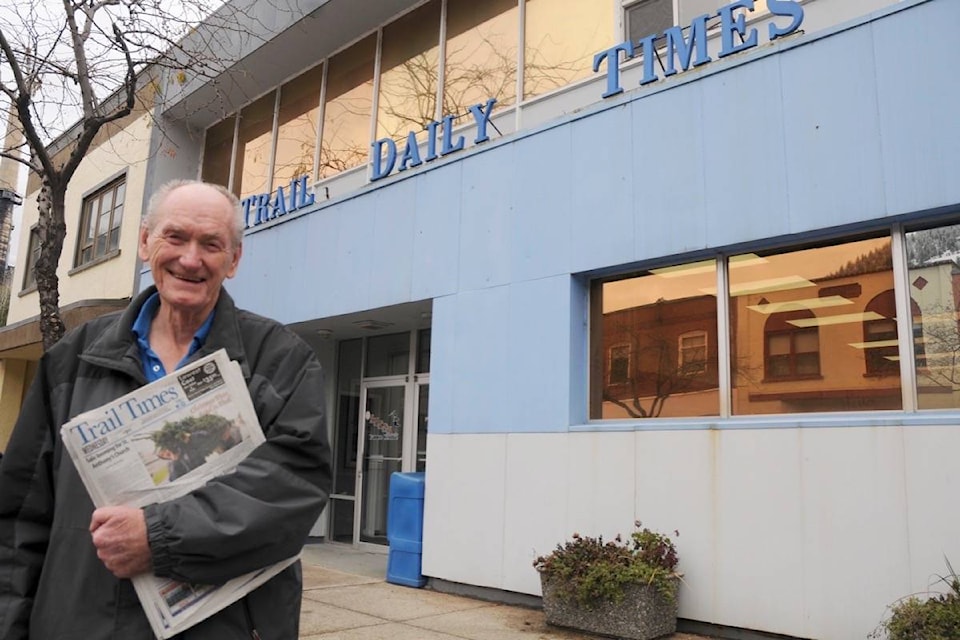To find out if the local trend mirrors the latest census finding that more Canadians 65 and older are still working - the Trail Times needed to look no farther than our own staff, in this case a paper carrier.
Merv Flack is 80.
After 15 years of delivering Trail Times editions, he still comes in Tuesday to Friday and picks up papers to drop in the mailbox - or hand deliver - to 44 East Trail residents on his route.
In Merv’s case, after 32 years on the school board he retired early, then worked in restoration for a few years. After that, he picked up where his sons left off and took over their carrier routes.
Why does he still do it?
“For the exercise and meeting people, talking with them,” he said. “Just the weather gets me sometimes, but otherwise it’s good, I enjoy it.”
The latest census data from Statistics Canada released Wednesday, show more Canadians are choosing to eschew the traditional retirement age, whether for their health, their finances or just for the fun of it.
One-fifth of seniors over 65 remained in the workforce in 2016, which is twice the rate of 1996.
More than 53 per cent of Canadian men aged 65 were working in some form in 2015, including 22.9 per cent who worked full-time throughout the year, compared with 37.8 and 15.5 per cent, respectively, in 1995.
There are more people over 65 than under 15 in an historic grey shift with the percentage of population over 65 expected to grow from 17 per cent to 23 per cent by 2031, while the proportion of children under age 15 flatlines.
At the age of 70, nearly three in 10 men did some sort of work in 2015, twice the proportion of 20 years earlier. Full-time work was at 8.8 per cent, up from 5.4 per cent in 1995.
The shift is even more dramatic for women, a reflection of their escalating role in the workforce. Some 38.8 per cent of senior women worked in 2015, twice the proportion of 1995, while the percentage of women working at 70 more than doubled over the same 20-year period.
Another Greater Trail trend dubbed the “grey wave” also mirrors the country’s overall picture of age demographics. Local numbers even top both the average age of Canadians, which is 41 and 42.3, the average age of British Columbians. The average age of residents of Trail in 2016 was 47.1 years-.3 years higher than the last census. That’s compared to an average age in Nelson of 42.5, and Castlegar of 45.5.
Other parts of Greater Trail also showed signs of the “grey wave.” Warfield’s average age is 43.3 years, Fruitvale’s 45.5. Montrose had the oldest average after Trail, at 46.0, but was getting older faster, with the average age going up 1.2 years from the 2011 census.
Meanwhile, Rossland was still relatively wet behind the ears, with the average person being 40.0 years old.
Additionally, the Kootenays are the third-oldest region in B.C., after the Thompson-Okanagan area and Vancouver Island.
For more on census data see Page 8.
- With files from Canadian Press
